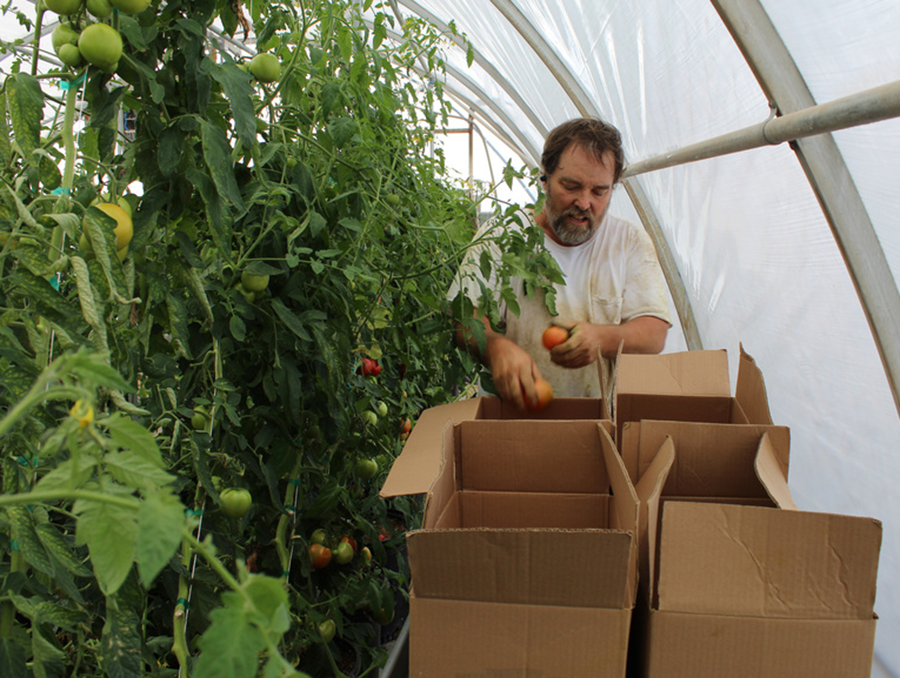College partners with USDA to bolster regional food systems
USDA project allocates $5 million to Nevada to build a stronger agricultural infrastructure
Emma Lande

Rodney Mehring, owner of Blue Lizard Farms in Caliente, Nevada, harvests 600 pounds of tomatoes from one of the farm’s hoop houses, some of which was delivered to Three Square Food Bank in Las Vegas. Photo by Abraham Mehring.
The College has entered a partnership with a consortium of public institutions, in collaboration with the U.S. Department of Agriculture (USDA), bringing $5 million to Nevada to strengthen the agricultural food supply system. The partnership is part of a $30 million overarching project by the USDA’s Southwest Regional Food Business Center.
The overarching project is coordinated across Nevada, California, Utah and Arizona by the University of California, Davis. It is timely for Nevada, as it addresses the issues of growing food insecurity and excessive dependence on imported food.
The College’s Extension unit will lead the project in the state, providing small-scale farmers, processors and distributors training and guidance to expand markets and improve access to government services and funds. Extension will draw on its extensive grassroot networks developed over a century of providing agricultural programs, the College’s Experiment Station unit, and the Nevada Department of Agriculture, a key partner.
Extension Educator Staci Emm, the project’s state implementation manager, said, “This comprehensive approach marks the first long-term program in Nevada specifically designed to enhance the distribution and processing of agricultural products, setting many of our producers up for success.”
As part of the overarching project, the Southwest Regional Food Business Center will also have a leadership council. The council will offer policy recommendations, coordinate funding opportunities and oversee business builder grants.
Nevada farmer Rodney Mehring said, “I believe the regional food centers have the potential to empower farmers of all scales, to compete effectively against larger producers.”


